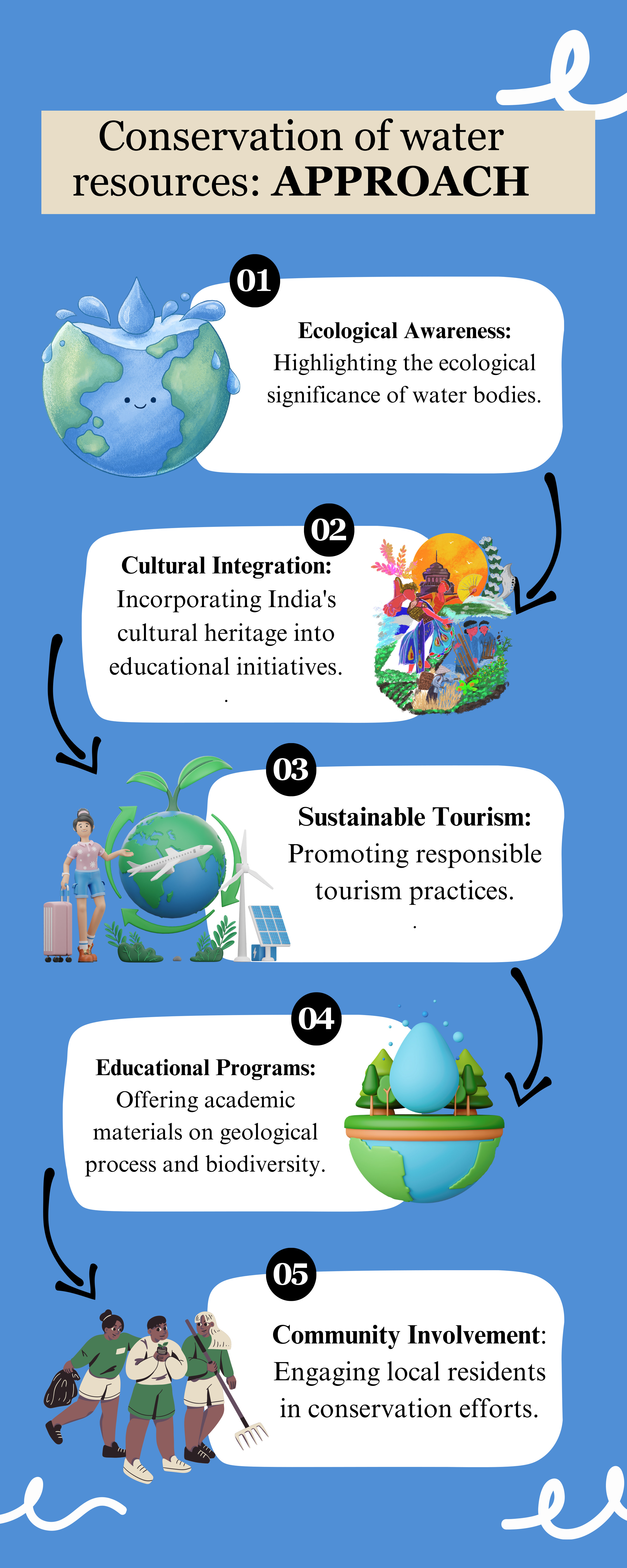Generating Awareness of Water Resources & Their Conservation for Sustainable Development
To generate awareness among students, faculty, and the community about water-related issues and conservation strategies.
To actively collaborate with local communities, NGOs, and government bodies to organize awareness campaigns on water conservation and sustainable practices.
To impart knowledge to students about water management, efficient usage, and conservation techniques.
To name buildings, facilities, and landmarks on its campus after prominent waterfalls and rivers in Jharkhand and India as a constant reminder of the need to protect these natural resources.
To engage students, faculty, and the local community in activities to overcome water-related challenges and adopt sustainable practices.
The University is situated in Angara, Ranchi, Jharkhand. The locale of this institution belongs to the Chota Nagpur Plateau and is surrounded by many waterfalls and rivers such as Hundru Falls (75 m) on the Subarnarekha River near Ranchi and Dassam Falls (39.62 m) on the Kanchi River, east of Ranchi. Such geographical diversity inspires the institution to educate society about the importance of waterfalls and rivers in Jharkhand and India for developing sustainable strategies and practices to conserve these natural water resources. This initiative is not just an educational campaign but a holistic approach to instill a sense of responsibility towards our natural resources. The objectives of this practice are multifaceted, aiming to create a ripple effect of awareness, appreciation, and action.
The University aims to raise awareness about the ecological significance of water bodies. Jharkhand, known for its stunning waterfalls and rich river systems, is a prime example of nature’s bounty. These water bodies are not just scenic attractions but are crucial for sustaining biodiversity. They serve as habitats for various species and play a key role in maintaining ecological balance. By educating the public, the university aims to highlight the intrinsic value of these ecosystems.
Tourism is a significant economic driver, especially in regions blessed with natural beauty. However, it often comes at a cost to the environment. The objective to promote sustainable tourism practices is a step towards reconciling economic benefits with environmental stewardship. Encouraging visitors to enjoy the beauty of waterfalls and rivers responsibly ensures that these wonders can be preserved for future generations.
The university provides educational materials and programs that inform the public about the geological processes behind waterfall and river formation and the biodiversity they support. This includes integrating environmental law into its academic offerings, ensuring that students understand the legal frameworks protecting these natural resources.
A key aspect of this approach is to foster community ownership and responsibility for waterfall and river valley areas. The university engages local residents in conservation efforts, which not only aids in the maintenance of these sites but also strengthens community bonds.
The university’s commitment to environmental conservation is evident in its collaboration with the Department of Planning & Development, Government of Jharkhand, to organize conferences and discussions on sustainable development. This partnership reflects the university’s dedication to integrating environmental awareness into its curriculum and community outreach programs. The programs’ focus on ecological awareness, cultural heritage, sustainable tourism, educational outreach, and community involvement sets a precedent for other institutions in India and beyond.
Despite its successes, the university’s program has faced constraints typical of environmental education initiatives. These include limited public interest in environmental issues, financial constraints in implementing wide-reaching programs, and the challenge of changing long-standing behaviors and perceptions about conservation.
The university’s best practices in educating society on the importance of waterfalls and rivers in Jharkhand and India are a testament to its commitment to creating a sustainable future. By addressing ecological, cultural, economic, and community needs, the university sets a standard for environmental education and conservation efforts in the region. The university’s initiatives serve as a model for how educational institutions can play a pivotal role in preserving natural resources and enriching societal values.









